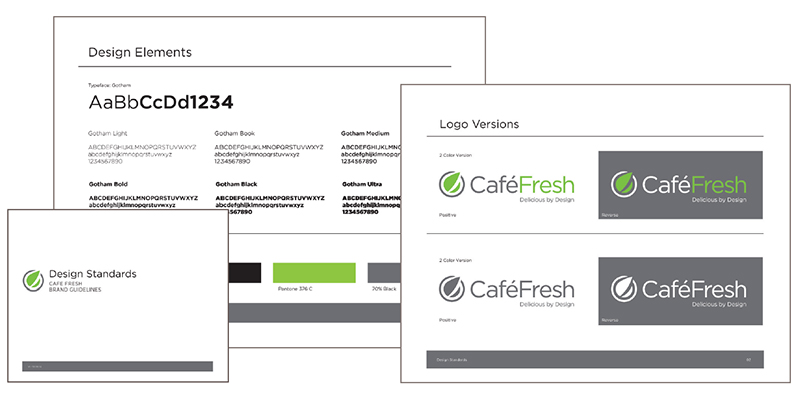Creating Brand Standards Guide for Style Consistency
The visual vocabulary of your brand
Brand Standards Guides enable retailers to offer their employees an easy to read reference on how to represent their brand internally and externally. A complete Brand Standards guide not only lists the corporate colors and correct font… it provides samples of how to represent your brand in your advertising, in your internal communications and in your website. To make sure that your brand standards guide is complete and effective, we recommend following three simple steps:
1. Build your Brand Vocabulary
To establish a Brand Standards Guide, first create a list of all the visual components and written components that can be used to represent your brand. Your brand’s “visual vocabulary” would include company logo, font, color palette, POP formats, copy direction, photography style, web page templates as well as e-mail and internal office documents. You should also list the written components that communicate your brand such as descriptions of your company, descriptions of your products… even the “script” that your office uses when answering your phone. An effective brand standards guide should show how employees can use all of these components to represent your brand.
2.Show your brand in action
Create a list of all of the brand touch points you have with your customers and within your organization, and show how to properly make your brand a part of these interactions. For example, show how to properly use your logo and color palette in POP, billboards, websites, and web-based banner ads. Create templates for internal presentations, e-mail signatures and internal office documents to ensure that your employees “live the brand.” And think about how your associates can activate the brand through the way in which they greet and thank customers.
3. Make the brand accessible to employees
Make the brand accessible by compiling your brand components and your examples of the brand in use in a well-organized brand standards booklet that you can print and hand to your employees. Include a Table of contents that quickly directs employees to key components such as proper logo usage and acceptable type faces. Include your company mission, vision and values in the document. Show “Dos” and “Don’ts”, so users understand that the goal is to not simply use the right logo but to use the right logo in the right way. And make sure that an explanation of your Brand Standards guide is a part of your employee orientation.
In summary, it is essential that all employees and active partners adhere to your brand standards guide. It will solidify your brand across all communications and strengthen your stores (company) position in the market. Remember, brands are not built overnight. Reinforce your standards every day to make your brand come to life.
